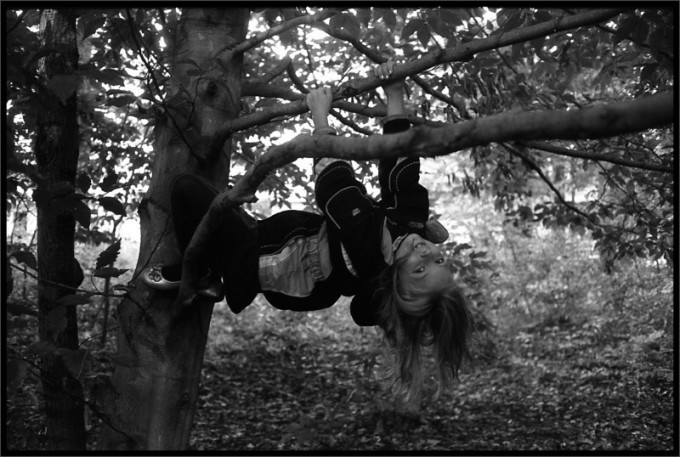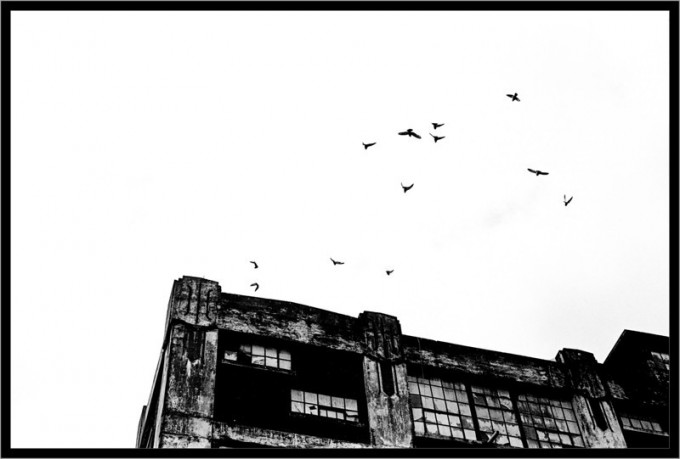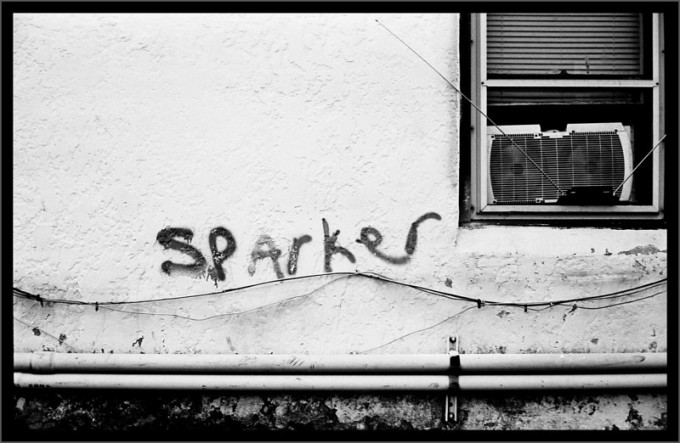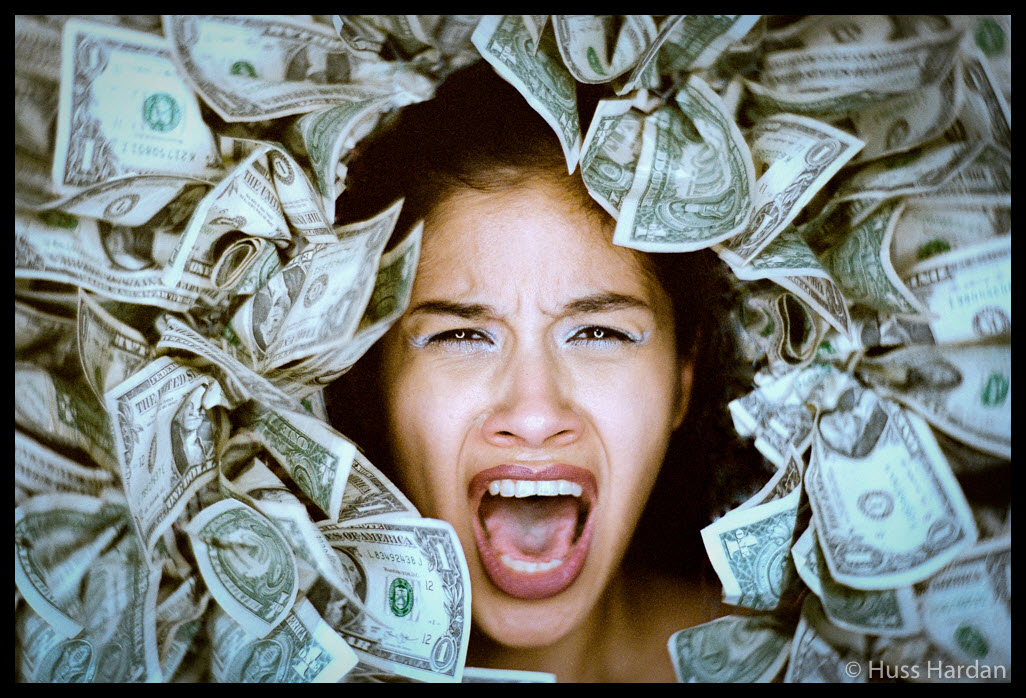What I’ve learned from Shooting Film
By Andrew Shipman
The main reason I want to write this is to explain why I think shooting film is not only fun and rewarding but also an indispensable tool for making you a better and more consistent shooter whether film or digital.
A little background on me:Iím 36 and have shot digital as a hobby and semiprofessionally for about 20 years. I have owned many P&S cameras as well as many Canon SLRs. I sold my SLR and currently own an Olympus EP-1 with kit lens, Panny 20mm, and a couple Canon FD lenses with adapter.
A little over a year ago I bought my first rangefinder a Yashica Electro 35 GSN for about 30 bucks. This was mainly due to your site talking about rangefinders and film. I quickly fell in love with not only rangefinder shooting but also with film, b&w film in particular. Later I bought a Canonet gIII ql17 and then I ended up buying a Yashica MAT 124 G, a Bronica sq-ai, and then a Mamiya RB67 S!
So yes I went a bit crazy ?
I quickly realized that shooting with rangefinders is very different and I love it, it made me see differently and improved my shooting considerably.
I also bought all the stuff to develop my own black and white mainly based once again on your site (what have you done to me Steve?) when you posted the article on Feb 16th entitled “Film: How to develop, scan, and print with no darkroom required! By Max Marinucci“. So my journey with film began.
Here are some of my first attempts
The one thing that I quickly learned while shooting film is you need to be much more intentional. I donít have a memory card with 2000 photos worth of space, I have 36 shots! It slowed me down.and that was a good thing! I suddenly was getting 90% keepers instead of 20%; I think this was pretty accurate for me. My years of digital SLRs had made me careless and I would shoot anything that peaked my interest, while I realize this has its benefits I think itís bad in more cases than not.


I just feel in love with the whole process of shooting and developing and scanning, itís wonderful! Then I moved to medium format, which amazed me when I first looked at it and still does.
After a while I was mainly shooting medium format and not much else…
–
So after a long journey into film I have just purchase a Canon T2i SLR to start shooting digital more, I do still have the Olympus EP-1 that I have shot with some over the last year and I really love but I really wanted something with larger image sizes and larger dynamic range after shooting mediums.
But I’ve noticed something…
I shoot different now, I don’t shoot as much, I wait for the right moments, and I’m more patient. This alone makes the last year of film shooting the best thing I ever did in photography. Even if I never shot film again (which won’t happen by the way), Iím still a better and more consistent photographer for having done it.
Thank you Steve and Max for opening my eyes to this whole wonderful world!!
Here is a link to my Flickr stream if you’d like to see more!
http://www.flickr.com/photos/burningalive/
[ad#Adsense Blog Sq Embed Image]










“For 120, I frankly think that the V750 does just as well as the bigger Nikon (9000) and it is much faster.”
Max, this is simply not true, and is especially noticeable with fine lenses. While small enlargements from an Epson can look ok by themselves, they fail to capture the finest details. And compared to a Nikon 8000, which I have, the Epson has two other problems that are just as bad, if not worse than sheer resolution: the most egregious is that when the contrast is properly adjusted, they blow out highlights. Especially obvious with blond-haired people, where highlight detail is very important. The other problem with Epson scanners is that with color film, they often simply can’t get it right, regardless of software–seems more like guessing. Color negative can be quite funky, and Velvia can have a purplish cast impossible to remedy. I had no idea how problematic the colors from my Epson were until I got the Nikon. Again, all these things may only be noticeable only when compared directly to a Nikon, but they are there.
Scott
Scott,
I own a 5000 ED and a v750 and I have taken the opportunity to compare both. I use the Nikon with the Nikon driver and the Epson with Silverfast AI. The Epson is part of my forthcoming Photorestauration business but for now I use it to scan 120……and to give you the details. First your right:
Epson: Optical resolution 2800 dpi at most (constrasty positive). Even with Silverfast some problems with noise in medium dark parts. Can be solved mostly by using Game and or (if you have the patians) 8 times oversampling. Ideal no, workable yes and I would comfortly blow them up to 80 x 60 cm (and that is no smal print in my book). And yes it is rather slow. BTW I scan at 4800 and resample to 8000 largest side.
Nikon. Optical resolution 3900 dpi. Noise can be a problem as well (this is physics and those laws are hard to negotiate) but GEM clears that up a lot. ROC really ROCS. I use it all the time to restore old slides to new glory. With a little tweaking in P-shop…..magnificent. I would like to ad a 9000 ED to my stable but money does not allow it now (but hey I want an Aztek as well…….yeps, I’m that sort of a gearhead……you can’t have to many scanners). BTW, this was done on a v750……and yes, I’ve tried all settings and for my personal scanner the topmost settings resulted in the best sharpness but you have to check that out yourself since there are build tollerances to be considered.
http://blogger.xs4all.nl/stomoxys/archive/2011/05/30/659434.aspx
Greetings, Ed
Great stuff Ed. 🙂
Thanx, and more to come! I love my old behemoth of a GX680 series I. Bought a 50 mm for it……what a lens……just the look of the thing make you shiver……112 mm filter thread……acres of glass and razor sharp just like the other lenses. These guys at Fuji sure had their act together back in the early ninetees. And it changes everything I’m used to doing. I use an old Ikophot T to check the exposure can you imagine. And that coming from a GF1.
Greetings, Ed
Could not agree more Andrew, I started shooting when I was nine and back in the 70th that meant film, darkroom and Nikon F (with a 50 and 135). When I went to University things got real busy for about 27 years untill a few years back I rediscoved my love for photography through an LX3 (a real gem of a camera). Now recently I went back to film using a medium format GX680 technical camera. Only nine shots per film (and considering the amount of effort it takes to shoot one frame that is more then sufficient). But the results are breathtaking when scanned and printed. You can even see the fineness of detail in 450 x 520 reduction on my webpage…..with digital photo’s are great (I use a GF1 now and that is also a mighty fine machine) but analog/digital, that make photos come alive so much more especially if you use 120 rollfilm (Ilford Delta 100 or Pan F). Next week the results from my first roll of Velvia should be in…….I even love the anticipation part of it. And I shoot completely manual (with an old Zeiss Ikon/Voigtländer handheld lightmeter I used with the Nikon F back in the 70th), which makes each picture an event in itself. Install tripod, screw camera on tripod, frame, focus, frame again, refocus, shift and tilt, refocus, frame again, measure, calculate (for bellows extension factor), recalculate, take out cassette cover, flip up mirror, expose film, flip down mirro, put in film cover (do not forget both last steps since if you change lens and have forgotten, kiss your last shot goodby), zero out everything and fasten for transport, stack away the camera, stack away the tripod, and your ready to walk again (eh, changing lenses can be difficult as well).
But I guess the result is worth the trouble.
http://blogger.xs4all.nl/stomoxys/archive/2011/05/27/658554.aspx
Greetings, Ed
I always used to think that film photographers were at best, an odd bunch, and at worst, unredeemable luddites. But all this talk of film eventually made me want to give it a try (I had pestered an uncle to lend me an old Pentax SF10 and 50m 1.7 combo he bought many years ago.Shot a first roll of film, and was blown away. After years of lusting for the greatest and best in the DSLR world, I was finally cured from upgraditis by a plastic camera I had gotten for free. I cannot afford a Leica (yet!) but in the meantime, I got myself some Ilford Delta 100, a mint Nikon FM2n and 50mm f1.4 manual lens this weekend which will do nicely. I only got to shoot a few frames (learning to shoot slowly, as you said, Andrew), but the whole experience has been liberating. Thanks Steve! Thanks Andrew! Thanks all!
Coolscan 5000 ED
http://www.flickr.com/photos/37556068@N06/5722557279/sizes/l/in/photostream/
Coolscan 5000 ED is very good. You can still find them on Ebay now and then.
Thank you for all the kind comments! I didn’t know my thought were posted till today! Thank Steve! These were all scanned with the Epson V500 scanner by the way, I don’t think I mentioned that. Thanks again!
Thanks for the scanner advice. I think I will try a Nikon coolscan V ED. From what I read they are a good as the 5000 but slower. Sure wish these units were still made new!
Absolutely gorgeous photos! The one with the birds is my favorite in this set.
Wonderful job there, Andrew. Happy to hear that my article pushed you to embrace film again 🙂 Nothing like it.
In regards to scanning, yes, Nikon’s Coolscan 5000 does a better job with 35mm than the Epson V700/V750. For 120, I frankly think that the V750 does just as well as the bigger Nikon (9000) and it is much faster. Having said that, consumer scanners in general have a very hard time with 35mm and grain. Having a darkroom print of the same scanned image, is an eye opener. I regularly print images made with Tri-X and processed in Rodinal 1:25, at 11×14 and grain is barely perceptible (certainly not intrusive). The scans show the typical grain aliasing and they can be quite different. Obviously, with medium format, and especially films like Acros, or even TMAX400, that is not an issue.
All the best,
Max
+1
Great piece Andrew, couldn’t agree more. I shot film for a long time before digi came on the scene, professionally as a snowboard photographer in Europe. The game has changed now but that is a different story…
It was also Max’s article that made me want to shoot film again (thanks Max & Steve) but now mainly black and white that I can process at home rather than endless rolls of Provia! I bought my first Leica (CL) followed by a whole bunch of flea market analogue bargains, talk about GAS! But the icing on the cake for me was the purchase of my Rolleiflex 2.8E, my first medium format camera. How much do I love that thing?! To round it off I got my hands on a Durst M800 enlarger and can set up my bathroom as a darkroom. Oh what joy not to have to look at a monitor (until I need to scan to upload online!)
A scanning tip I can give is using the Digitiliza scanning frames from Lomography.com Also, try Vuescan as your software – I have been quite happy with the results from my Canoscan 9000F. With an Epson I imagine they could be better. Also, Reflecta are bringing out a medium format scanner soon, I await with interest. Not that I expect it to compete with the Flextight I used at the magazine though 😉
Great to see people buying analogue gear again and it doesn’t always have to be some luxury item. There’s lots of cool SLR’s out there with nice glass going for cheap, I have a whole pile of them lol
Wonderful shots. I traded my m8.2 for an m7 last year and haven’t looked back. One problem I have been having is that I feel my Epson 750 scanner is not giving me the sharpness that I think I can get from film.
I am curious what scanner you used.
I understand your woe, I use a V700 and feel the same. Have you played around with the adjusters on the holders? I find on the highest setting results are a lot sharper but I can’t help but wonder whether a Nikon LS50 would give better results for 35mm.
The Nikon LS50 gives magnificent results and better than the V700 which I also tried.
Your article (and the last one from Sandy) convinced me to start shooing film again. No silly WB adjustments and artificial digital look and endless comparisons of latest digital cameras to see which one is the best.
I have a Nikon 35Ti and with for instance Velvia 50 it consistently gave better results than my digital equipment. Pictures are not as clean and detailed as the output from my d700, but still the colors and light has another quality which I like a lot (even under harsh light conditions where digital really struggles).
Your pictures are wonderful examples of how nice film can be. Thanks.
The photograph of the birds wheeling above the building stopped me in my tracks. A wonderful set of photos ..thank you for the inspiration
Film oh film. All these kind of articles make me want to sell my M8 to fund Zeiss Ikon (local camera store has one “used” in mint condition and it looks gorgeous) and a decent scanner. All the stuff needed to develop film I’d already have.
On a side note really love this one http://www.flickr.com/photos/burningalive/5609273263/in/set-72157625191960002/lightbox/
Waterfull really captured my imagination! excellent!
Great article and pictures, Andrew! I went through a similar process: M8 -> M3/MP -> Hasselblad -> Fotoman 6×12
Very nice. I think the picture of the tree and cemetary is just spectactular and worthy of hanging on a wall somewhere.
I switched from the M9 back to film rangefinders last year and love it. Although its a bit of a pain at times with processing and going through airports etc, there is nothing like the look of real film. My friends are consistently surprised at the natural depth and elegance of film images.
And best of all you don’t have to worry about buying the latest and greatest camera every few months.
I’m almost in the same position as you were a year ago. 6 months ago I bought a Sony Nex-5 and started learning real photography. All through internet (ISO, aperture/f-number and shutter speed mostly) understood a lot that I was missing from P&S. Got some adapters and some old glass and just 2 months ago got into some classes for beginners to get what I wasn’t getting from internet (for now white balance and photometry where the big discoveries, to finally understand why my photos where all orange!).
Because of the same article that I read a month ago, and because we are going to have our laboratory class in some weeks I was planing on buying a Electro GSN to get into film and rangefinders at the same time for a small cost. In fact, I’m following a couple of bids right now.
I just read your article and made me want them more than ever, and hope my path through film be as rewarding as yours.
Tiago.
The two of the girl are just beautiful. The waterfall, also, is wonderful. Great job on the film processing, with nice tonal range.
I abandoned photography (b&w film) 9 years ago from burn-out, but got curious a year ago and am trying digital with a Nikon D90. Now this year, I dug out my Canon F-1N and Konica Auto S2. After a few C-41 rolls, I’m thinking it’s time to unfreeze the Tri-X bulk roll that I couldn’t part with, and find some D-76.
Thank your for the wonderful images.
+1
That sounds great. Enjoy!